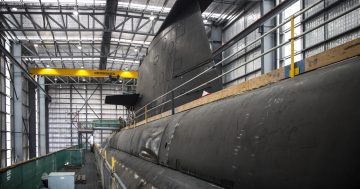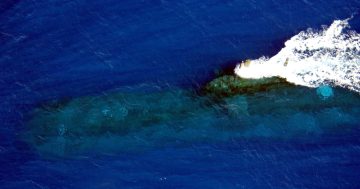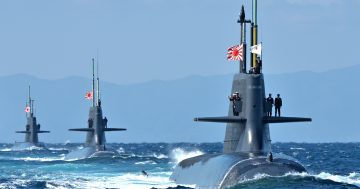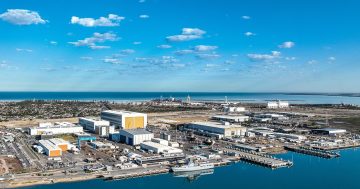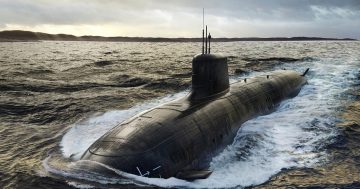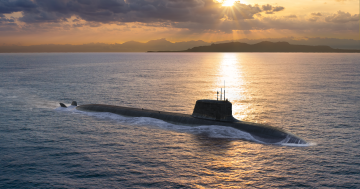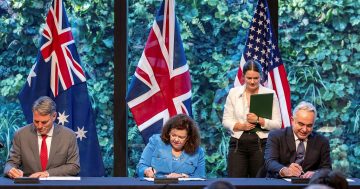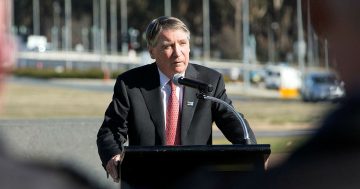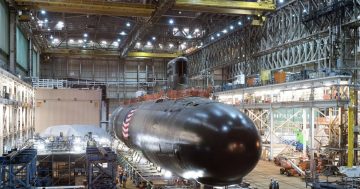
Defence Industry Pat Conroy at the National Press Club. Photo: ADF.
The government has taken the opportunity of a National Press Club address by Defence Industry Minister Pat Conroy to address some of the lingering “myths” it says have been tacked on to the ambitious AUKUS plan for Australia to buy nuclear-powered submarines.
Mr Conroy said it was his and the government’s “number one priority” to ensure the ADF has the capability it needs to protect and defend Australia. He said the past few years have seen “very significant changes to our strategic environment”.
Mr Conroy tempered that by stressing that conflict is far from inevitable but repeated the oft-quoted line by both sides of politics that “Australia’s 10-year warning time has evaporated, just as it did in the mid-1930s”.
Enter AUKUS, a trilateral arrangement between Australia, the UK and the US that aims to share advanced military technologies – including nuclear-powered submarines – among the three countries.
Mr Conroy said deterrence is best achieved through “a mix of intelligence collection, defensive and strike assets that generate deterrence, and if that fails, an ability to impose an unacceptably high cost on any attacker”.
Enter the nuclear-powered submarine and the government’s belief that “acquiring the most capable nuclear-powered conventionally armed submarines in the world is key to this strategy”.
But Mr Conroy expressed his frustration at the tone of public debate since the details of AUKUS Pillar 1 were released in March by Prime Minister Anthony Albanese, US President Joe Biden and UK PM Rishi Sunak with much fanfare pier side in San Diego.
“AUKUS attracts myths like hulls attract barnacles, so I’d like to scrape off a few more today,” he said.
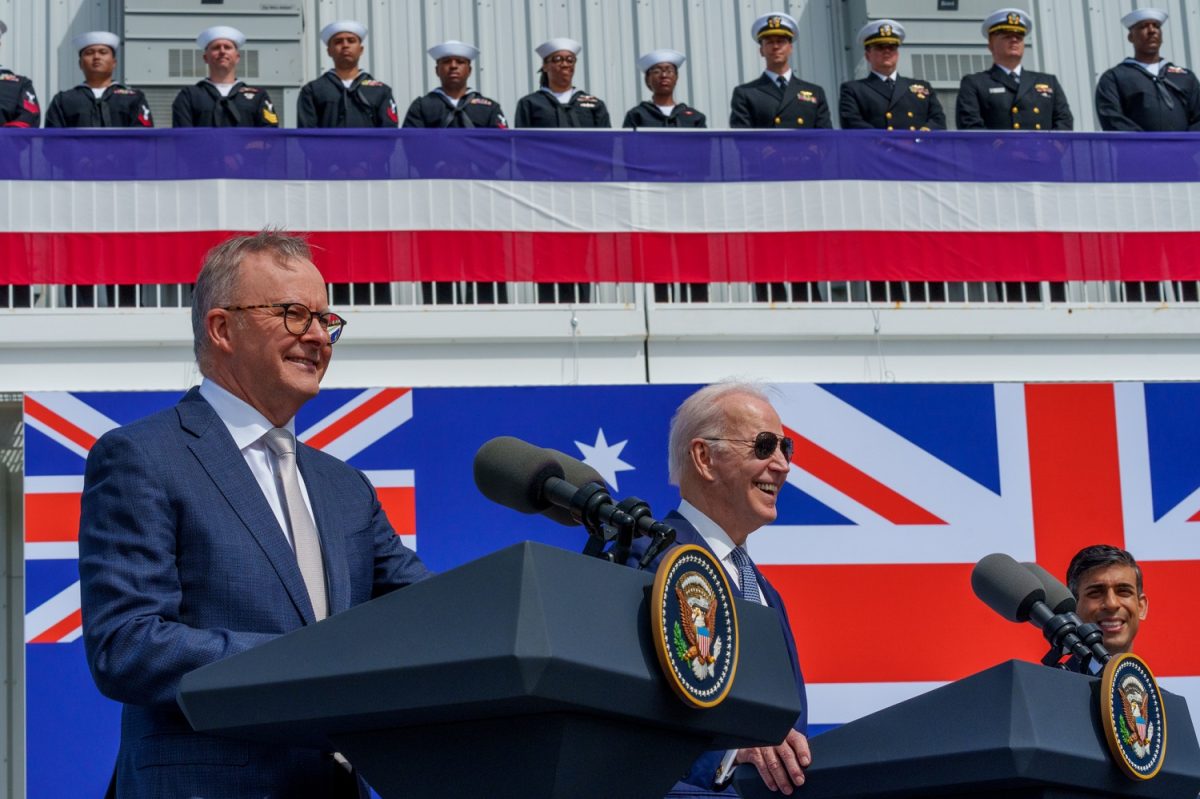
Prime Minister Anthony Albanese, US President Joe Biden, and British PM Rishi Sunak announce the AUKUS submarine arrangement in San Diego in March. Photo: PMO.
Mr Conroy said nuclear-powered submarines could transit twice as fast and spend more than twice the amount of time ‘on station’ than a conventionally powered boat over an example mission of 70 days’ duration.
He also stressed that conventional boats need to surface or snorkel at periscope depth and run on diesel power in order to recharge their batteries, which can put them at risk of detection.
“Submarines are at their most vulnerable when near the surface,” he said, “but nuclear-powered submarines can stay submerged from the minute they leave their base to the minute they return.”
The current schedule calls for two ex-US Navy submarines and one new-build Virginia class submarine to be delivered to Australia at two- to three-year intervals starting in 2032. The last of the current Collins class submarines will overlap this period, giving Australia sufficient submarine capability until the first new SSN-AUKUS boats arrive.
The UK’s Royal Navy will be the first to take delivery of SSN-AUKUS boats built in the UK from the late 2030s, while Australia’s first SSN-AUKUS is planned to be the third of class and delivered from Osborne in Adelaide from 2042. Subsequent Australian SSN-AUKUS boats will be delivered at three-year intervals.
This plan is at odds with claims made by former Prime Minister Paul Keating earlier this year at the Press Club and from the opposition, who thinks Australia should just buy more Virginia boats from the US.
“Mr Keating, whom I greatly respect, has suggested that these submarines will be built in the United Kingdom,” Mr Conroy said. “This is incorrect.
“Peter Dutton and Alexander Downer have suggested that we should buy them from some mythical showroom in the United States – this is completely wrong.
“The entire point of AUKUS Pillar 1 is to expand and grow the industrial base of all three nations so that Australia can join the US and UK in building nuclear-powered submarines. This will be the greatest industrial undertaking ever attempted in Australia both in scale and technical complexity.”
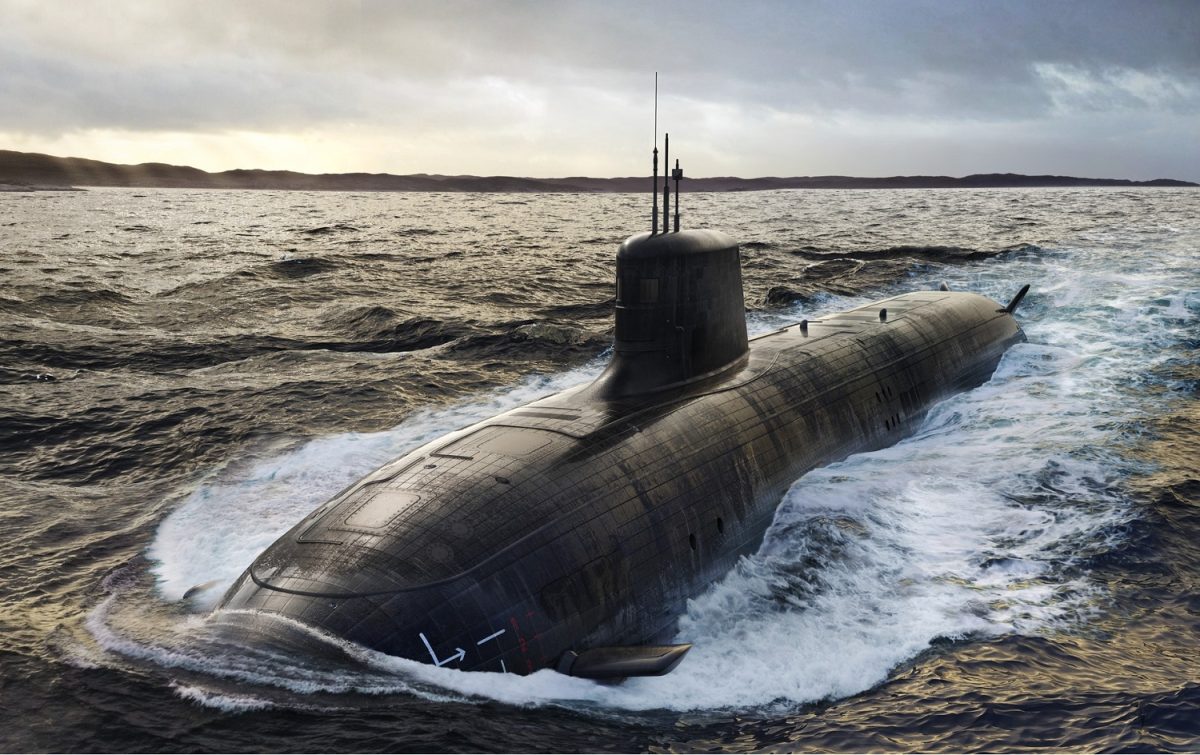
Concept art of the SSN-AUKUS submarine design. Image: UK MoD
Mr Conroy also addressed the staggering cost of the project, favourably comparing the entire 30-year project estimate of $368 billion – which includes a 50 per cent contingency – to that of the previous government’s plan to acquire conventional Attack class submarine of French design.
“It was eventually revealed that the Attack class had an acquisition cost of almost $90 billion and sustainment costs of $145 billion out to 2080, a total of $235 billion,” he said.
“And that figure did not include all the costs … the workforce or the required facilities and infrastructure, weapons, and contingency across the whole program.”
On the question of Australian sovereignty over the nuclear-powered boats, Mr Conroy said Australia’s nuclear reactors would either be delivered sealed in the Virginia boats or as sealed units for installation in the SSN-AUKUS boats.
“Australia’s nuclear-powered submarines will be owned, operated, maintained and regulated by Australia and under Australian command,” he said. “They will be a sovereign Australian capability commanded by Royal Australian Navy officers under the ADF’s chain of command.”
Others have questioned the relevance of submarines in the future, with some claiming emerging technologies will erode the advantages of a submerged submarine.
“It is true that undersea surveillance technology is advancing,” Mr Conroy conceded. “Australian Defence Science and Technology Enterprise is a global leader in undersea and maritime capabilities.
“I’ve asked our best scientific minds whether technology is capable of tilting the balance between stealth and surveillance, and the answer is not yet and probably not ever.”
As the debate continues, Deputy Prime Minister and Defence Minister Richard Marles travelled to the US over the weekend for the second AUKUS Defence Ministers’ Meeting with his counterparts, US Secretary of Defense Lloyd J Austin III and UK Secretary of State for Defence Grant Shapps.
Original Article published by Andrew McLaughlin on Riotact.


